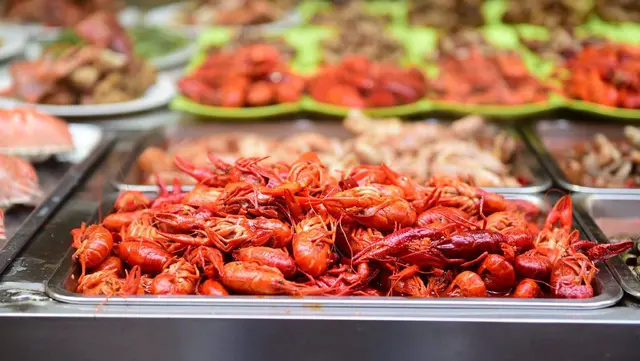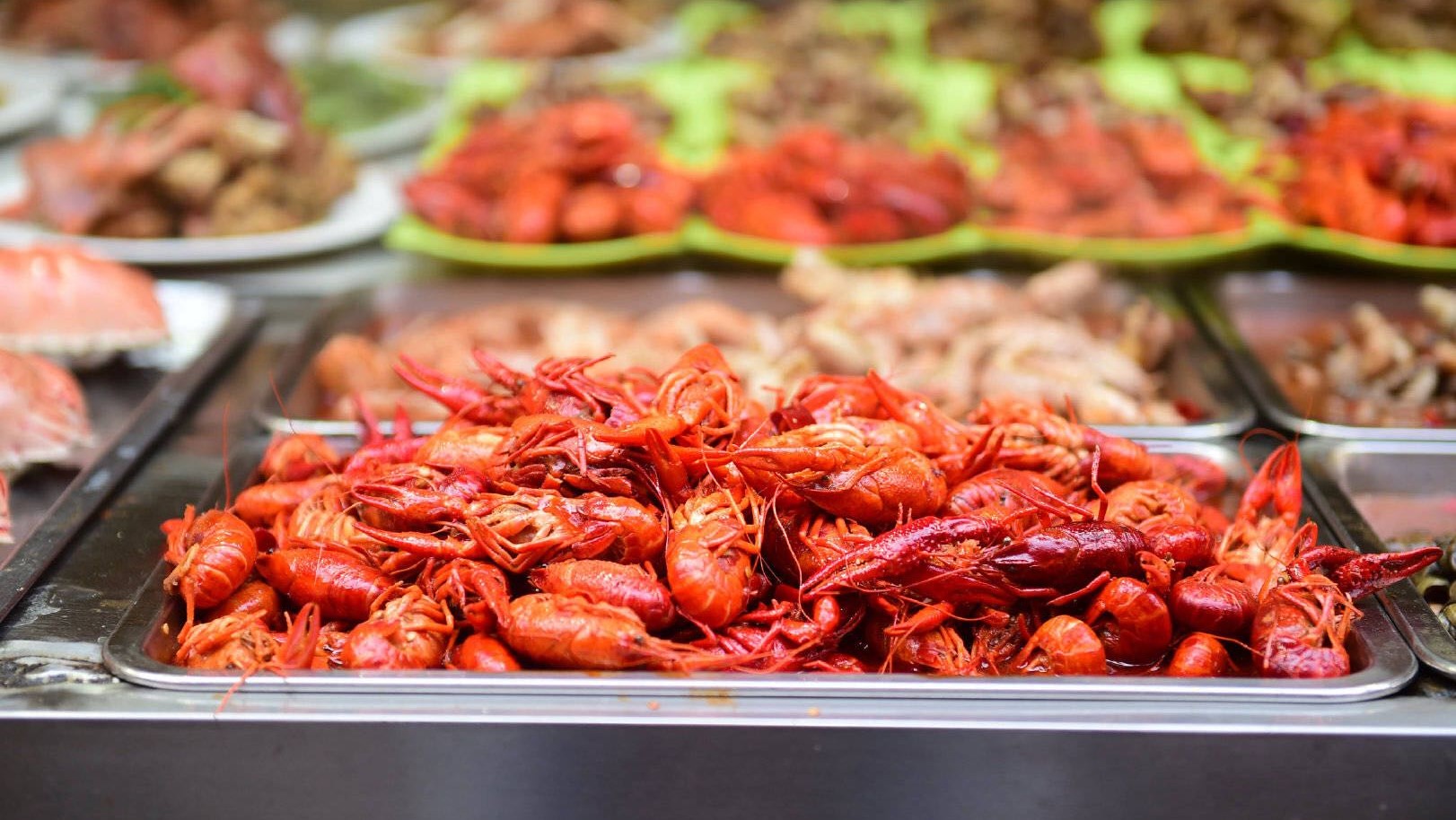
VCG
Chinese health officials reported last Thursday that a sample of frozen chicken wings imported from Brazil to Shenzhen, a city in southern China, tested positive for the coronavirus.
According to incomplete statistics from public reports, this is the ninth time that China has found new coronavirus on frozen seafood packaging since July.
A report released by the China Cuisine Association last month on the resumption of work in the catering industry in the first half showed that the operation of most catering companies has recovered to 70 percent to 80 percent of the pre-epidemic level, with the decline continuing to decrease, and showing a gradual recovery trend.
However, with the ups and downs of the seafood market due to the epidemic, merchants in the seafood industry chain feel like riding a roller coaster.
Bill Li is the owner of a seafood barbecue restaurant in Beijing, which offers seafood barbecue takeaway through Chinese major food delivery platforms, Ele.me, and Meituan-Dianping.
"We mainly operate crayfish, mantis shrimp, clams, and striped snails barbecue. The crayfish are directly supplied from the producing area, Jiangsu Province, and the mantis shrimp are provided from the Bohai Sea, such as Shandong Province, while the striped snails are mainly imported from Vietnam," Li told CGTN.
"Now we mainly sell crayfish and have stopped selling seafood like mantis shrimp and striped snails," Li said, noting that crayfish is a freshwater product with high yield and stable supply.
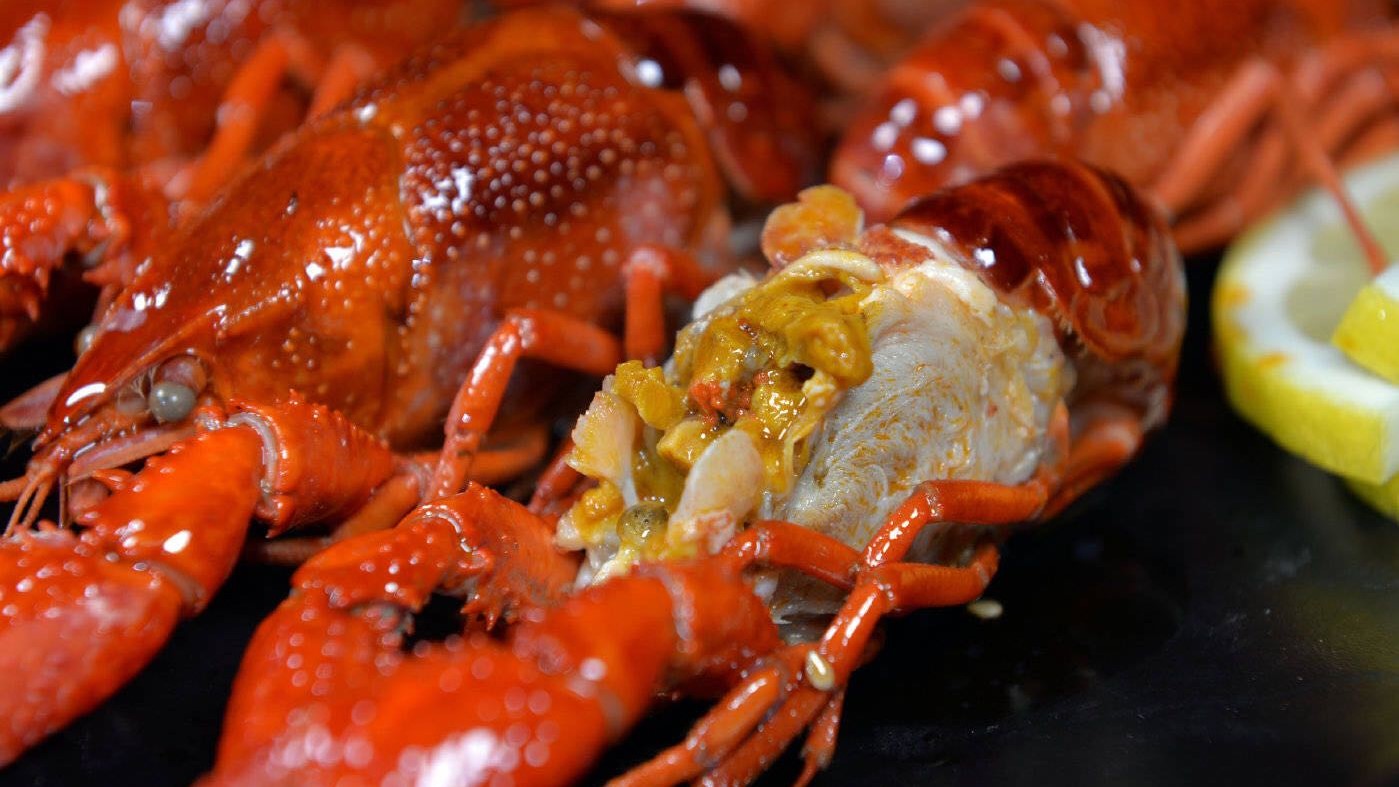
VCG
"The supply and price of mantis shrimp are unstable this year, affected by various factors such as the epidemic, typhoon, as well as transportation costs. Also, the import of striped snails has been strictly regulated by domestic customs since January," he added.
According to industry sources, most seafood upstream suppliers sell in a single category, with small profits but quick turnover, and the volume of goods is always calculated in tons. However, international freight and sales are unstable due to the epidemic, which leads to a huge loss.
On June 13, the novel coronavirus was detected on a chopping board used by a seller of imported salmon at the Xinfadi market, the largest wholesale market with fruit, vegetable and meat supplies in Beijing, leading to the shutdown of the market and other major seafood markets in the capital city. As a precaution, many supermarkets and restaurants in China decided to take salmon off their shelves.
Unlike other types of restaurants, many Japanese cuisine stores have experienced the disappointment of closing their doors again or an empty shop with no customers due to the new coronavirus found on frozen seafood products after enjoying the joy of gradually reopening a business in May.
Hou Lei, the head of a Japanese cuisine store in Beijing, said that raw foods such as sashimi always account for about 40 percent of his daily sales before.
"Raw foods such as salmon and sweet shrimp were taken off the shelves, and all related stocks were destroyed due to the Xinfadi incident," said Hou, noting that now their major food ingredients are beef, chicken and pork, with only processed food sold.
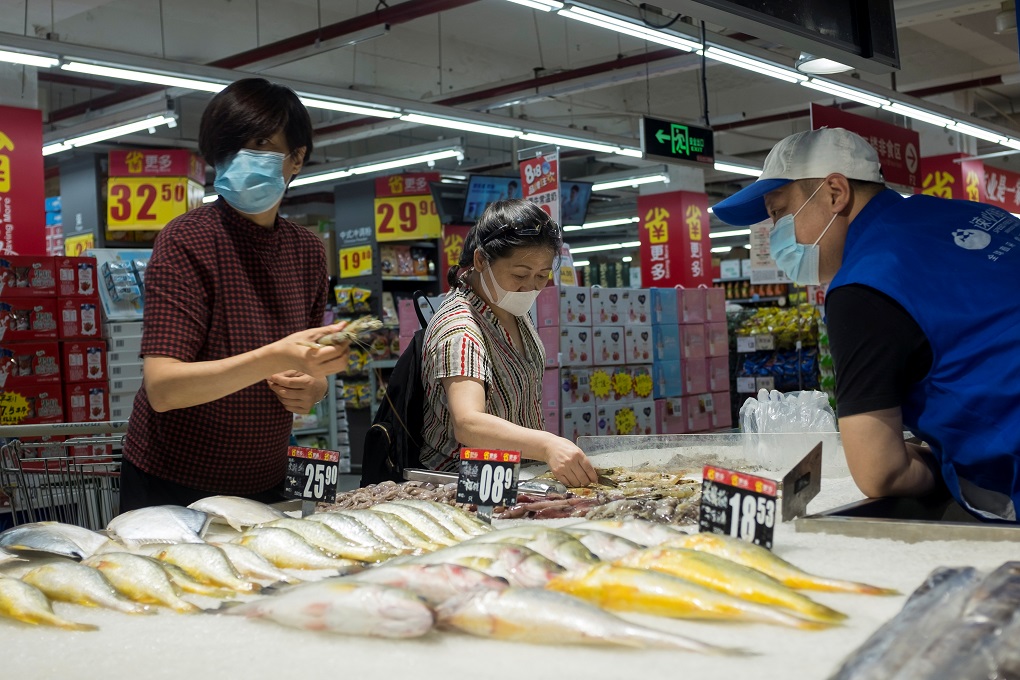
People look at fresh seafood in a supermarket in Beijing, China, August 13, 2020. /VCG
China's top three salmon import sources are Chile, Norway, and the Faroe Islands, which together hold a 70-percent share.
According to statistics from the Norwegian Fisheries Agency (NSC), in the 29th week of 2020, Norway exported about 68 tons of chilled salmon to China, declining 45 percent from the previous week and 81 percent from a year earlier.
In addition, imported seafood entering customs at present must undergo sampling investigation and testing. Only the seafood passing the nucleic acid tests for COVID-19 can be released, with the process taking as little as 30 hours, or as long as a week. However, for seafood wholesalers, time is profit.
Fresh seafood cannot withstand the consumption of time, and its price drops a little every day. If converted to frozen products, the price will fall by at least 50 percent.
Success belongs to the persevering
According to Li, the business actually declined along with the overall downturn in the catering industry and further weakened in June.
"But because we provide only takeaways food rather than outdoor dining, we don't face the heavy pressure from operating costs of stores, so the impact of us is relatively small," he said with a slightly relaxed tone.
Meanwhile, Li said that the government has established WeChat groups with businesses in the catering industry very early, requiring them to report on the store's sanitary situation and the body temperature of the clerk every day and invite a third party to the store for sanitary testing.
"The adverse impact of the epidemic is indeed great, but we must find ways to overcome it," said Li. "Now we are trying to sell diversified, for instance, increasing some non-seafood products. The other is to do a good job of sanitation and disinfection and make it open and transparent to consumers."
In times of crisis, the quality and reputation of the store are particularly important, he added.
Nick Zhu, who has been engaged in seafood for 20 years in Hangzhou, lamented that he can't help but feel a little sad when hearing that some business partners closed stores and returned home. "The seafood business is already part of my life, and as long as I persist, it will get fine," he told Zheshang magazine, a local business magazine.
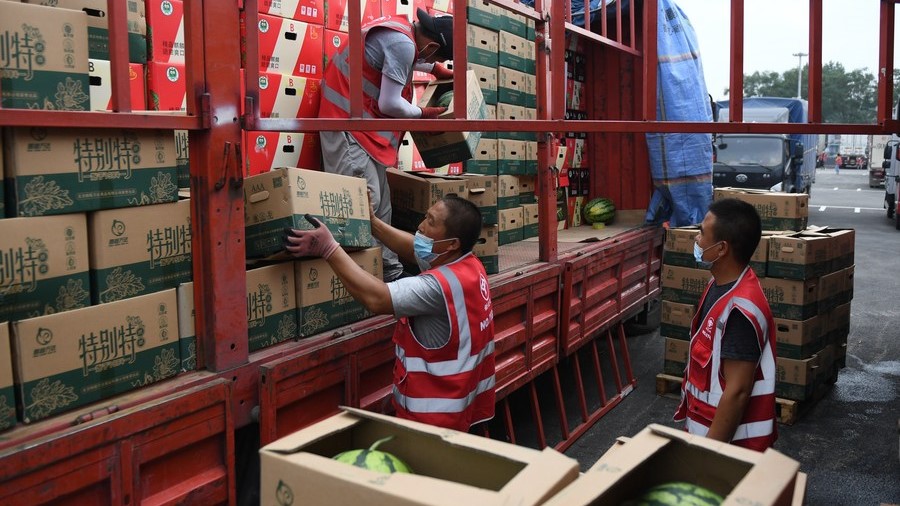
Merchants unload watermelons at the Xinfadi wholesale market in Beijing, capital of China, August 15, 2020. /Xinhua
As coronavirus outbreak ebbs, the Xinfadi market reopened to the public last Saturday but only as a wholesale operation, with all sellers and buyers required to complete real-name authentication before entering the market.
Carrefour, one of Beijing's major supermarket chains that stopped selling salmon in June, has relisted salmon and crab, which can be seen on the food delivery platform.
 简体中文
简体中文

